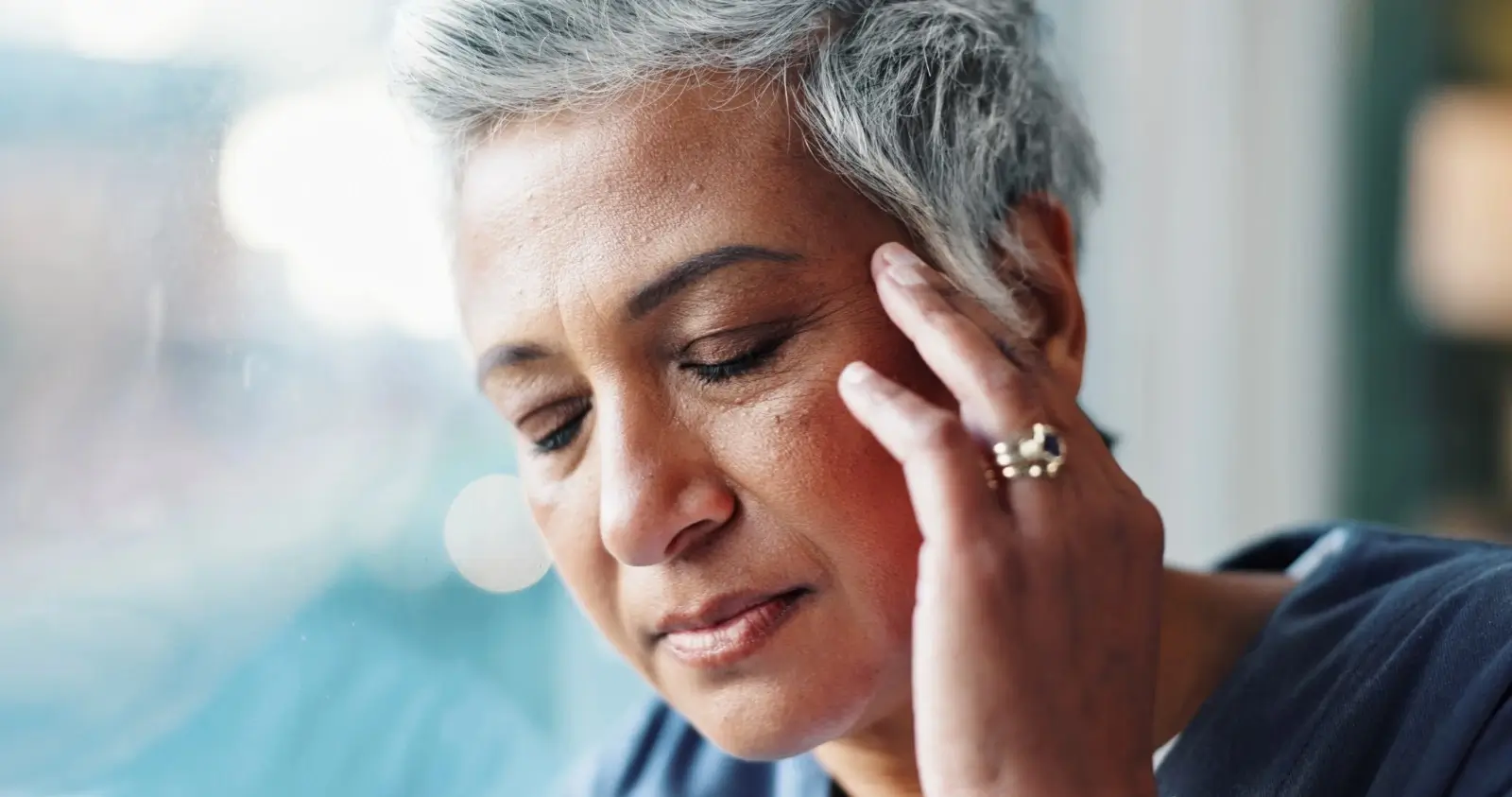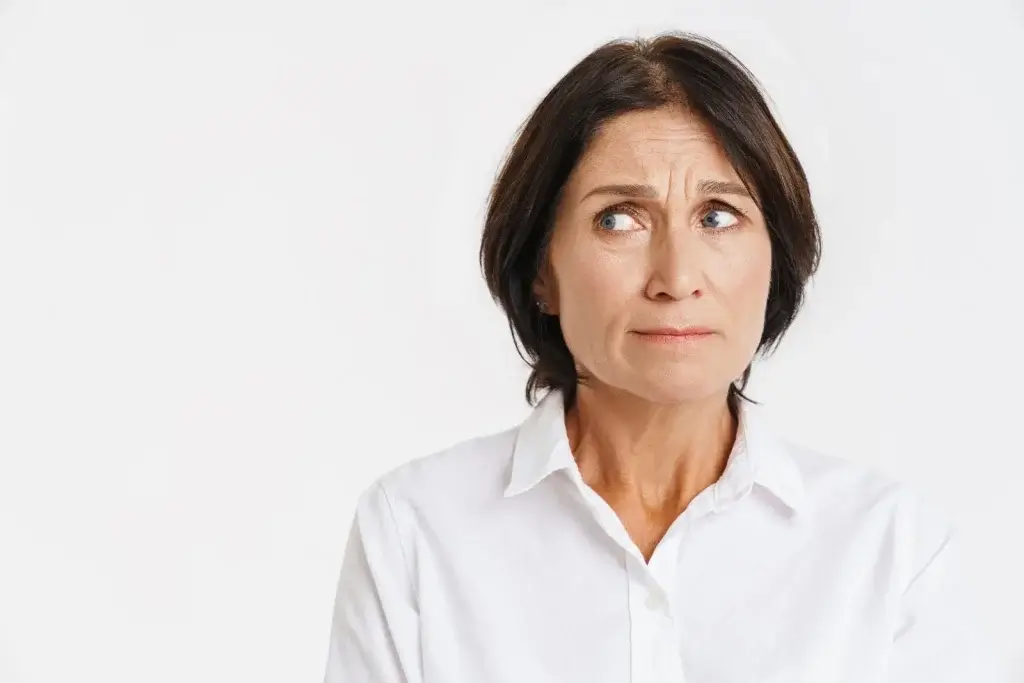

The thought of bleeding after menopause can be alarming. For many women, the very first question that arises is: “Is bleeding after menopause always cancer?” It’s a natural fear, and one that deserves compassionate, honest answers.
The truth is: postmenopausal bleeding is never something to ignore, but it isn’t always cancer. There are many possible causes, and most of them are not life-threatening. Still, every case should be checked by a doctor, because your body deserves to be listened to.
This article explores why postmenopausal bleeding happens, what it could mean, when to seek medical advice, and how to support your body through this stage of life. By the end, you’ll feel more informed, reassured, and empowered to take the next step for your health.
Menopause is officially diagnosed when you’ve gone 12 months without a menstrual period. After this stage, the ovaries produce far less estrogen and progesterone, which leads to the end of monthly bleeding.
So, when bleeding happens after menopause, it’s called postmenopausal bleeding. This could mean spotting, light bleeding, or even heavy flow. Regardless of the amount, it’s always a signal that your body is asking for attention.
But here’s the key truth: postmenopausal bleeding is not always a sign of cancer. In fact, the majority of cases are linked to benign (non-cancerous) causes. However, since cancer is one possible reason, medical evaluation is essential.
If you’ve noticed bleeding after menopause, take a deep breath. While it’s natural to fear the worst and wonder, “is bleeding after menopause always cancer?” the answer is no. In fact, most cases are linked to causes that are treatable and far less serious. Still, it’s important to get checked. Here are the most common explanations — and what you can do next.
When estrogen levels fall after menopause, the vaginal lining often becomes thinner, drier, and more fragile. This condition, known as atrophic vaginitis, can cause tiny tears that lead to spotting, especially after sex or even physical activity.
What you can do: Vaginal moisturizers, lubricants, and sometimes low-dose local estrogen therapy (under medical supervision) can help restore comfort. If you notice recurring bleeding, check with your doctor to confirm the cause.
Polyps are small growths on the cervix or inside the uterus. They are usually benign, but they can cause irregular bleeding or spotting. While not dangerous in most cases, they sometimes need to be removed for relief or further testing.
What you can do: If your doctor suspects a polyp, they may remove it during a simple outpatient procedure. This not only helps stop the bleeding but also ensures nothing more concerning is present.
For some women, starting or adjusting hormone replacement therapy can trigger spotting or light bleeding. This is often temporary and settles within a few months as the body adapts to new hormone levels.
What you can do: Keep track of your symptoms and let your doctor know how long the bleeding lasts. If it continues beyond the adjustment period or becomes heavy, ask about modifying your treatment plan.
Infections of the uterus, cervix, or vagina can cause inflammation and irritation, leading to unexpected bleeding. These are often accompanied by other symptoms such as discharge, discomfort, or pelvic pain.
What you can do: Don’t wait these out — see your healthcare provider. Most infections can be treated easily with antibiotics or antifungal medication, and early care helps prevent complications.
This condition occurs when the lining of the uterus grows too thick, often due to hormone imbalances. It can lead to heavy or prolonged bleeding. In some cases, it can develop into cancer if left untreated.
What you can do: This is one of those conditions where medical follow-up is vital. Treatment may include hormone therapy or, in some cases, minor surgical procedures to prevent progression.
Though less common than other causes, cancers such as endometrial (uterine) cancer or cervical cancer can sometimes cause bleeding after menopause. This is the scenario most women fear, but it’s important to remember: early detection greatly improves outcomes.
What you can do: Seek medical care immediately if you notice bleeding after menopause. Even if it turns out to be something minor, you’ll gain peace of mind — and if it is serious, you’ve acted early, which is the most powerful step you can take for your health.
Gentle Reminder: While many causes of postmenopausal bleeding are non-cancerous, none should be ignored. Your body is wise and always worth listening to.
The short answer is no — bleeding after menopause is not always cancer. But it is always important.
Here’s why: while conditions like polyps, infections, or atrophic vaginitis are common and treatable, around 10–15% of postmenopausal bleeding cases are linked to cancer. That percentage is enough reason to see a doctor promptly.
It’s also worth noting: heavy bleeding is never considered “normal” after menopause. While some women may wonder, “is heavy bleeding a sign of menopause?” the answer is that once menopause has occurred, any bleeding — heavy or light — requires medical attention.
Your body is wise. Bleeding after menopause is its way of saying, “Please pay attention to me.” And by listening, you give yourself the best chance for reassurance or early treatment.
You should book a medical appointment if you experience:
Any vaginal bleeding after menopause, even if it’s just spotting.
Heavy bleeding or passing clots.
Bleeding during sex after menopause.
Persistent pelvic pain or pressure.
Recurrent episodes of spotting over weeks or months.
Even if the bleeding seems minor, don’t dismiss it. Many women feel tempted to delay out of fear — but often, the earlier you check, the simpler the treatment and the quicker the peace of mind.
If you see a gynecologist, they may recommend:
A pelvic exam.
Ultrasound to check the thickness of the uterine lining.
Pap smear or HPV test.
Endometrial biopsy (to check for abnormal or cancerous cells).
These are routine tests and can provide clarity quickly. The aim is not to frighten you, but to help you feel in control and safe.
While medical evaluation is essential, many women also ask: “How to stop heavy bleeding during menopause naturally?”
The first and most important answer is: always check with your doctor. Postmenopausal bleeding should never be ignored. But once medical causes have been ruled out or treated, there are supportive, natural approaches that can help nurture hormonal balance and overall wellbeing. Think of these as gentle companions to your healthcare plan — tools that can make you feel stronger, calmer, and more connected to your body.
Food is medicine, especially during midlife. Certain nutrients and plant-based compounds can help your body cope with hormonal changes and rebuild what’s lost through bleeding.
Phytoestrogens (plant compounds found in foods like flaxseeds, soy, lentils, and chickpeas) may gently mimic estrogen’s effects in the body, supporting hormone balance and easing symptoms.
Iron-rich foods — such as spinach, pumpkin seeds, beans, lentils, and lean red meat — are especially important if heavy bleeding has lowered your iron levels. Pairing iron sources with vitamin C (like citrus or bell peppers) helps with absorption.
Whole foods & fibre keep blood sugar stable, which also supports steady hormonal function and mood.
Pro Tip: Keep your plate colourful. A rainbow of vegetables and fruits provides antioxidants that protect your cells and keep energy levels strong.
Exercise isn’t just about fitness — it’s about emotional wellbeing, circulation, and hormone regulation. Gentle, consistent movement can reduce stress hormones, improve sleep, and boost your overall mood.
Walking, swimming, or cycling are wonderful low-impact ways to keep the body active without overstraining.
Strength training supports bone health, which becomes especially important after menopause.
Yoga or Pilates improve flexibility, pelvic strength, and calm the nervous system.
Pro Tip: Listen to your body. If you’re feeling fatigued, choose something restorative like stretching or a short walk. The goal isn’t intensity, but consistency.
Midlife can bring unique pressures — career, caregiving, health changes — all of which can spike stress hormones like cortisol. High cortisol can worsen hormonal imbalance, making bleeding or other menopause symptoms more challenging.
Yoga combines gentle movement with breathwork to soothe the body and mind.
Meditation and mindfulness practices reduce anxiety and help you feel more grounded.
Breathing exercises — even 5 minutes of slow, deep breathing daily — can shift your body into a calmer state.
Pro Tip: Treat stress management as self-care, not a chore. Lighting a candle, playing soft music, or journaling counts as stress relief too.
Some women turn to herbal remedies to ease menopausal symptoms. While research varies, certain herbs have been traditionally used to support hormone balance:
Black cohosh has been studied for hot flashes and mood changes.
Red clover contains phytoestrogens that may provide mild hormone-like effects.
Chamomile tea can relax the nervous system and improve sleep quality.
Important: Always consult your healthcare provider before starting supplements, especially if you’re on medications or have underlying health conditions. Natural doesn’t always mean risk-free.
Sometimes the simplest steps are the most powerful. Bleeding — even light spotting — can deplete your body’s hydration and energy stores.
Drink water throughout the day, and include hydrating foods like cucumbers, melons, and soups.
Prioritize restful sleep, as the body restores itself during deep rest. Aim for a calming bedtime routine — dim lights, switch off screens, and create a cool, comfortable sleep environment.
Gentle naps or rest breaks during the day can also help your body recover if you’re feeling drained.
Pro Tip: Think of hydration and rest as acts of self-love, not luxuries. They’re the foundation of healing and resilience.
Final Note: These natural approaches won’t replace medical evaluation, but they can beautifully complement it. By nourishing your body, calming your mind, and honouring your need for rest, you support healing from the inside out.
If you’ve been worrying and Googling “is bleeding after menopause always cancer”, let this be your takeaway: no, it isn’t always cancer — but it’s always a reason to check in with your doctor.
Your body is wise and wants you to listen. Most causes are treatable, many are benign, and if it does turn out to be serious, early diagnosis can save lives.
So instead of carrying fear silently, choose empowerment: make the appointment, get the answers, and support your body with kindness along the way.
Because your health journey is uniquely yours — and you deserve peace of mind.
Yes, in some cases. Straining during bowel movements can put pressure on the pelvic area and fragile vaginal tissues, sometimes leading to minor spotting. However, it’s important not to assume — always check with your doctor to rule out other causes.
Vigorous exercise usually doesn’t cause postmenopausal bleeding, but activities like running, heavy lifting, or high-impact workouts may occasionally irritate fragile tissues, leading to light spotting. If you notice consistent bleeding after workouts, consult your doctor.
Stress itself doesn’t directly cause bleeding, but high cortisol levels can affect hormone balance, which may indirectly influence the uterine lining. Stress can also worsen other symptoms like hot flashes and sleep problems, making the overall picture more complicated.
Yes. Postmenopausal vaginal dryness and thinning (atrophy) can cause small tears that bleed after sex, pelvic exams, or even daily activities. It’s one of the most common and benign — causes of postmenopausal bleeding.
Yes. Even 10+ years after menopause, benign causes like polyps, infections, or tissue thinning can still be responsible. The time since menopause doesn’t automatically make it more dangerous — but evaluation is still key.


